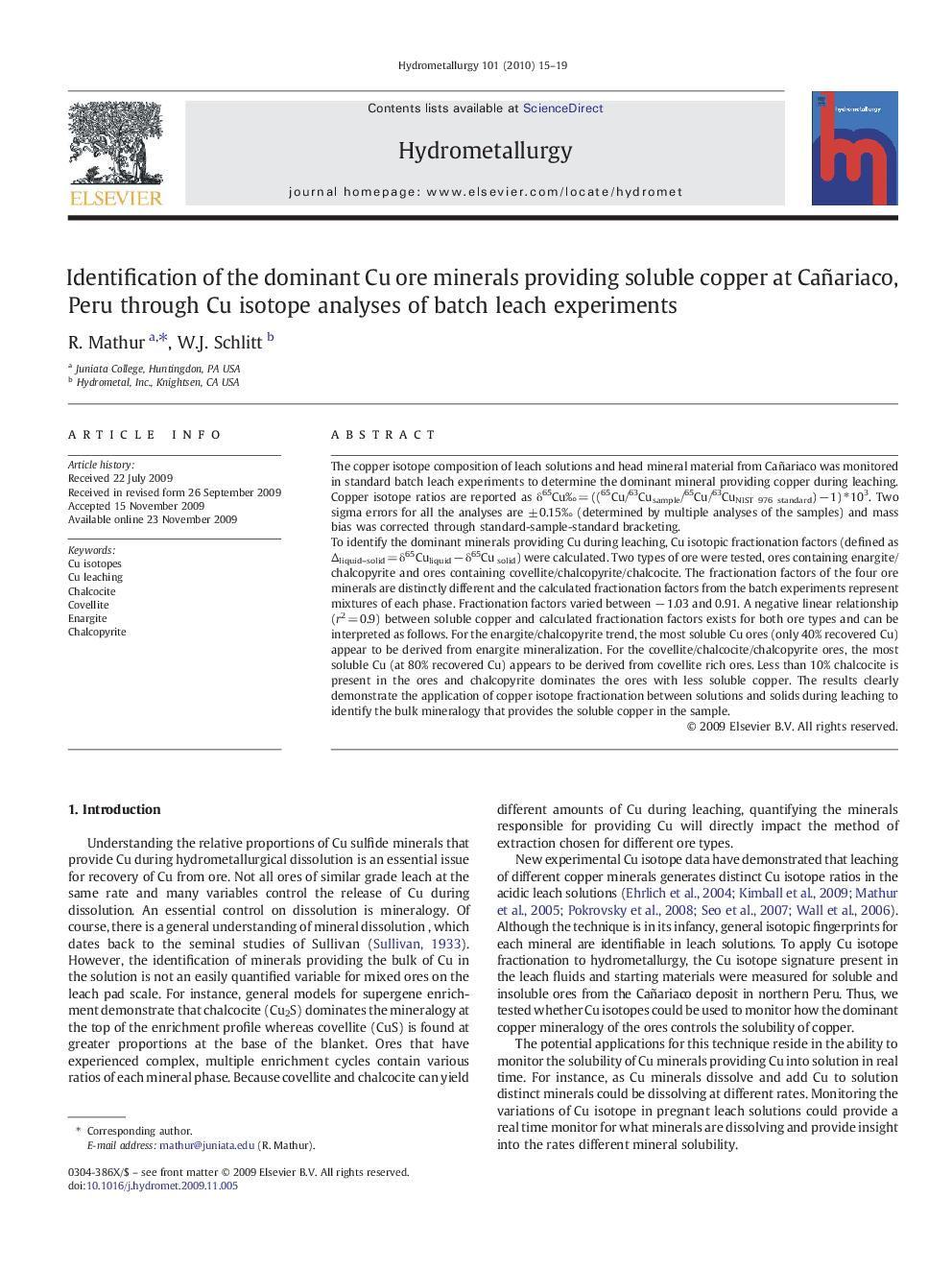| Article ID | Journal | Published Year | Pages | File Type |
|---|---|---|---|---|
| 213269 | Hydrometallurgy | 2010 | 5 Pages |
The copper isotope composition of leach solutions and head mineral material from Cañariaco was monitored in standard batch leach experiments to determine the dominant mineral providing copper during leaching. Copper isotope ratios are reported as δ65Cu‰ = ((65Cu/63Cusample/65Cu/63CuNIST 976 standard) − 1) ⁎ 103. Two sigma errors for all the analyses are ± 0.15‰ (determined by multiple analyses of the samples) and mass bias was corrected through standard-sample-standard bracketing.To identify the dominant minerals providing Cu during leaching, Cu isotopic fractionation factors (defined as ∆liquid–solid = δ65Culiquid − δ65Cu solid) were calculated. Two types of ore were tested, ores containing enargite/chalcopyrite and ores containing covellite/chalcopyrite/chalcocite. The fractionation factors of the four ore minerals are distinctly different and the calculated fractionation factors from the batch experiments represent mixtures of each phase. Fractionation factors varied between − 1.03 and 0.91. A negative linear relationship (r2 = 0.9) between soluble copper and calculated fractionation factors exists for both ore types and can be interpreted as follows. For the enargite/chalcopyrite trend, the most soluble Cu ores (only 40% recovered Cu) appear to be derived from enargite mineralization. For the covellite/chalcocite/chalcopyrite ores, the most soluble Cu (at 80% recovered Cu) appears to be derived from covellite rich ores. Less than 10% chalcocite is present in the ores and chalcopyrite dominates the ores with less soluble copper. The results clearly demonstrate the application of copper isotope fractionation between solutions and solids during leaching to identify the bulk mineralogy that provides the soluble copper in the sample.
